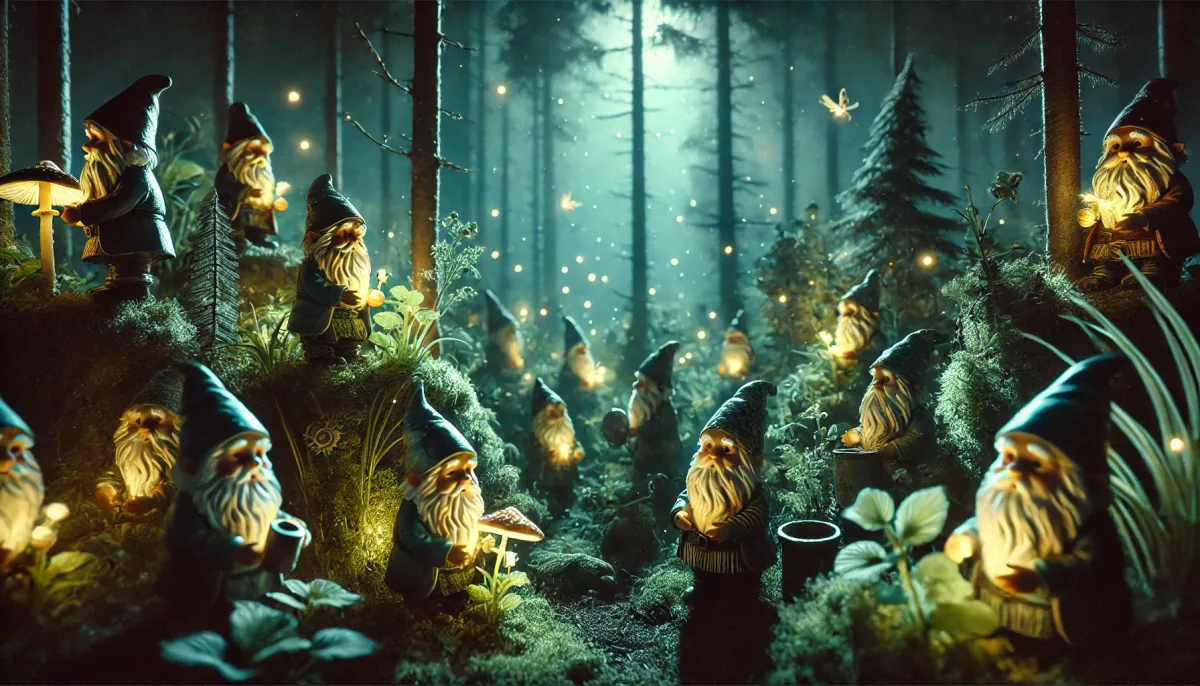The Purpose of Gnomes: Folklore, Protection, and Modern Interpretations
Discover the fascinating history of gnomes—from ancient folklore to their role as protectors of nature. Explore their symbolism, evolution, and modern interpretations.

Gnomes have captured human imagination through folklore, mythology, and modern pop culture for centuries. These small, bearded figures are often associated with the protection of nature, hidden wisdom, and an air of mystery that continues to intrigue us today.
But where did the concept of gnomes originate? How did they come to be regarded as guardians of the earth? And why do they remain a beloved figure in gardens and storytelling? This article delves into the origins, evolution, and contemporary significance of gnomes, exploring their deep-rooted symbolism and enduring legacy.
The Origins of Gnome Folklore
The word "gnome" is believed to have originated from the Renaissance period, coined by the Swiss physician and philosopher Paracelsus in the 16th century. He described gnomes as elemental spirits of the earth—beings who lived underground and were responsible for the well-being of soil, minerals, and plant life. According to his alchemical theories, gnomes were one of the four elemental entities, alongside sylphs (air), undines (water), and salamanders (fire).
However, the roots of gnome mythology trace back even further. Various cultures across Europe had their versions of small, earth-dwelling creatures, such as:
- Germanic and Norse Mythology: The concept of "dwarves" in Norse mythology bears a striking resemblance to gnomes. These beings were expert craftsmen who lived underground and possessed immense wisdom.
- Slavic Folklore: Domovoi, household spirits in Slavic mythology, were believed to protect homes and ensure harmony within the household.
- Celtic Legends: Irish leprechauns, though mischievous, share similarities with gnomes as small, nature-affiliated beings with magical abilities.
These early depictions reinforced the idea that gnomes were caretakers of the natural world, possessing ancient knowledge that helped preserve the balance of nature.
Gnomes as Protectors of the Earth
One of the most enduring aspects of gnome folklore is their association with the protection of the earth. This belief stems from the idea that gnomes reside in deep forests, mountains, and underground caverns, watching over wildlife, plants, and minerals. Their duties include:
1. Guardians of Plants and Trees
Gnomes are often depicted as devoted stewards of forests and gardens, ensuring that trees, flowers, and crops thrive. In folklore, they are believed to have a special connection to nature spirits, enabling them to communicate with plants and nurture their growth.
2. Keepers of the Soil and Minerals
Because gnomes are said to live underground, they are closely linked to the earth’s minerals and gemstones. Some traditions suggest that they guard hidden treasures, preventing greedy humans from exploiting nature’s resources irresponsibly.
3. Protectors Against Evil Spirits
Many folk traditions view gnomes as defenders against dark supernatural forces. In some legends, they act as unseen guardians who protect homes, travelers, and forests from malevolent beings or misfortune.
4. Helpers to Farmers and Gardeners
A common belief in European folklore is that gnomes assist farmers and gardeners by keeping pests away, enriching the soil, and ensuring a bountiful harvest. This protective role is why garden gnomes remain popular symbols in landscaping today.
The Evolution of Gnomes in Popular Culture
1. The Rise of Garden Gnomes
The tradition of placing gnome statues in gardens began in Germany during the 19th century. These figures were believed to bring good luck, encourage plant growth, and ward off evil spirits. By the 20th century, garden gnomes became a staple in homes across Europe and North America.
2. Gnomes in Literature and Media
Gnomes have featured prominently in fantasy literature, including works by J.R.R. Tolkien, C.S. Lewis, and Terry Pratchett. They often appear as wise, ancient beings or mischievous tricksters. Films, animated series, and video games have further solidified gnomes as beloved fantasy creatures.
3. Modern Interpretations and Urban Legends
In contemporary times, gnomes have taken on new meanings. Some people believe that moving garden gnomes or mysterious sightings of small humanoid figures indicate supernatural activity. Others see them as symbols of sustainability and environmental awareness, representing harmony with nature.
The Enduring Legacy of Gnomes
Despite their mythical origins, gnomes continue to hold a special place in folklore and popular culture. Their image as protectors of the earth aligns with modern environmental concerns, making them enduring figures in both fantasy and conservation movements.
Whether as whimsical garden ornaments or legendary guardians of nature, gnomes remind us of the importance of respecting the natural world.
Next time you see a garden gnome, take a moment to appreciate its deeper symbolism. Perhaps, just perhaps, it’s watching over you and your surroundings, carrying on a tradition that dates back centuries.
Discover Our Unique Gnome Collections
If you love gnomes and want to bring their charm and folklore into your home or garden, explore our exclusive gnome collections:
Each of these sets captures the whimsical, protective, and magical essence of gnomes, making them perfect for collectors and nature lovers alike!